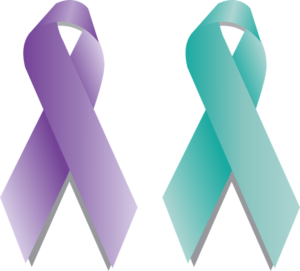
September is a month for awareness of both pain and ovarian cancer. Chronic pain is something that many people live with and struggle with daily, and women often experience pain because of gynecological health conditions, including ovarian cancer. These conditions not only cause pain but can also trigger other symptoms and complications, but there is hope for treatment and pain management.
-
- Ovarian cancer. Cancer of the ovaries can cause a number of symptoms, including pelvic or abdominal pain and lower back pain. This can be a sign of cancer as the tumor pushes against nerves and other organs, but it can also be a side effect of treatment, like pain from surgery or chemotherapy. Ovarian cancer is often called a silent cancer because women may not feel symptoms until it is well developed. It is crucial to be aware of any kind of unusual pains, especially for women with risk factors. For instance, many women with ovarian cancer are now suing manufacturers of baby powder, finding that years of use of this seemingly harmless product may have caused the cancer.
- Ovarian cysts. A cyst on an ovary is a benign, non-cancerous growth, but it can also cause significant pain, especially when large in size. Like a tumor it can press on organs, tissue, and nerves, causing chronic and moderate to severe pain. A cyst may even rupture which causes acute, intense pain. Cysts often resolve on their own, but when they cause a lot of pain a woman may need pain medications or even surgery.
- Endometriosis. Endometriosis is one of the more painful gynecological conditions. It occurs when the tissue from the inside of the uterus begins growing on the outside. It sheds monthly, but with nowhere to go it can cause pain, inflammation, irritation, and even scar tissue. The most common, persistent symptom of endometriosis is serious pain, during menstruation, during intercourse, and even during bowel movements and urination. Simply managing the pain is not enough; women with this condition must have hormone therapy or surgery to fix the underlying issue and reduce pain.
-
- Uterine fibroids. Another benign type of growth that can lead to pain is the uterine fibroid. Fibroids grow in the uterus and can range in size from barely detectible to large enough to stretch the uterus. Uterine fibroids cause heavy periods and significant pelvic pain and pressure, as well as lower back pain. For some women, using pain medications is enough to manage symptoms. But, if the fibroids grow too large or cause a lot of pain, procedures to remove them may be necessary.
- Pelvic inflammatory disease. This infection in the reproductive organs is caused by bacteria, usually from sexually transmitted diseases. There may be no symptoms, but the infection can cause significant pain in the pelvic area and lower abdomen. The pain can become intense. Pain relievers may help, but ultimately the infection must be treated with antibiotics to resolve symptoms.
This month provides a chance to improve awareness of ovarian cancer and pain. For women there are many illnesses and conditions that can cause serious gynecological pain, including ovarian cancer and other less serious issues. All of them are significant in that they cause pain, sometimes severe and sometimes chronic, and this reduces quality of life. Women need to be aware of the health problems that can cause pain, listen to their symptoms, and see their doctors for diagnosis, treatment, and pain management.
